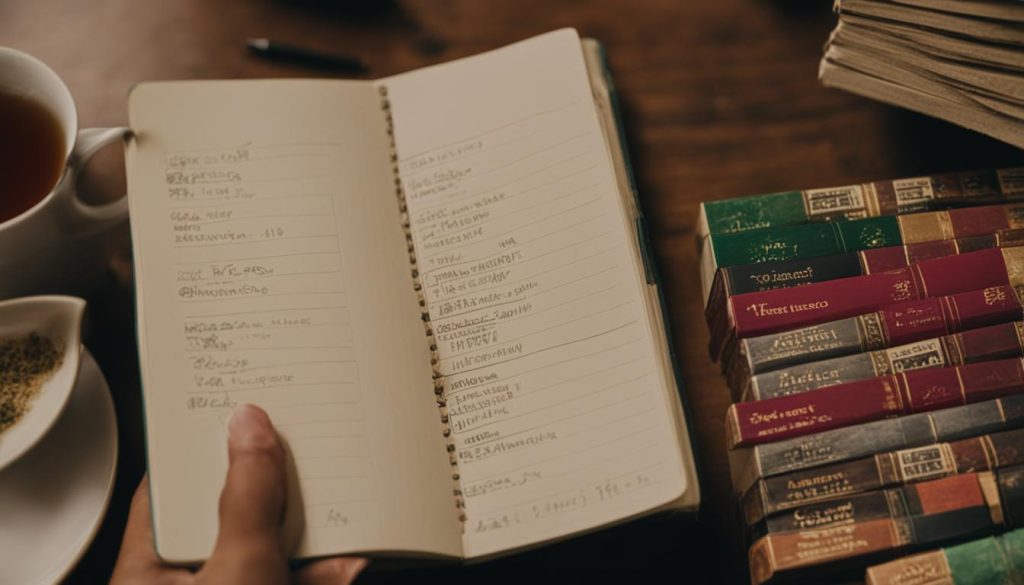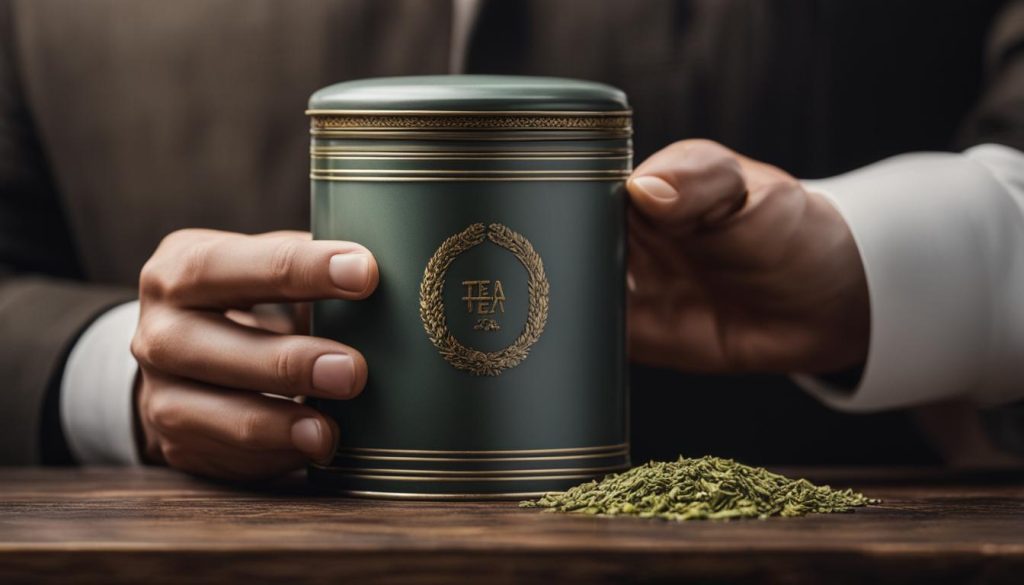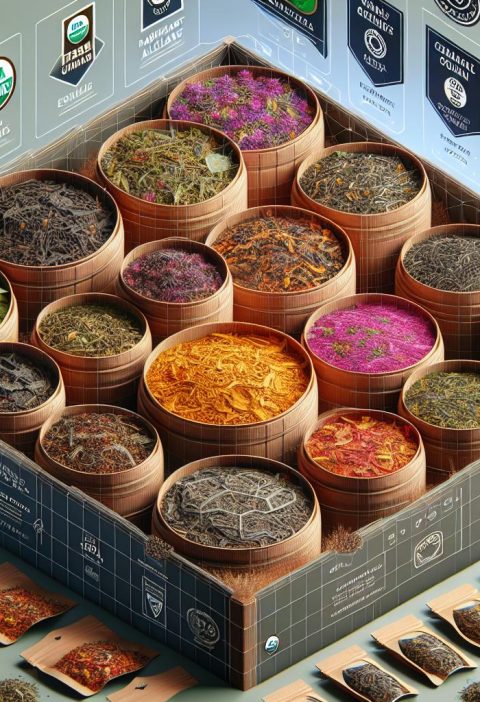Negotiating prices at tea shops can be a daunting task, but with the right strategies, you can ensure that you’re getting the best deal. In this article, we will explore the top tips and tactics for successfully negotiating prices at tea shops. Whether you’re looking to haggle for a discount or bargain for a better deal, these techniques will help you navigate the negotiation process and come out on top. From understanding the psychology of negotiation to knowing when and how to make counteroffers, we’ve got you covered.
Understanding the Psychology of Negotiation
Negotiation is as much about psychology as it is about strategy. Understanding the psychology of negotiation can give you an advantage when negotiating prices at tea shops. By knowing the motivations and mindset of the tea shop owner or manager, you can tailor your approach to get the best results. This section will delve into the key principles of negotiation psychology, such as the importance of building rapport, active listening, and finding common ground. Armed with this knowledge, you’ll be able to approach negotiations with confidence and success.
Key Takeaways:
- Understanding the psychology of negotiation can give you an advantage when negotiating prices at tea shops.
- Building rapport, active listening, and finding common ground are important aspects of negotiation psychology.
- By knowing the motivations and mindset of the tea shop owner or manager, you can tailor your approach to get better results.
Doing Your Research
Before engaging in price negotiations at a tea shop, it’s crucial to do your research. This section will guide you on how to gather information about the tea you’re interested in, the average prices at different tea shops, and any ongoing promotions or discounts. By having a clear understanding of the market value of the tea you want to purchase, you’ll be better equipped to make informed decisions and negotiate effectively. We’ll also provide tips on leveraging this research during the negotiation process to demonstrate your knowledge and assert your bargaining power.
Key Takeaways:
- Research the tea you’re interested in, the average prices at different tea shops, and any ongoing promotions or discounts.
- Having a clear understanding of the market value of the tea will help you negotiate effectively.
- Leverage your research during the negotiation process to demonstrate your knowledge and assert your bargaining power.
Building Rapport with the Tea Shop Staff
Building rapport with the tea shop staff is a crucial aspect of successful price negotiation. This section will discuss the importance of establishing a positive relationship with the tea shop staff, as it can lead to better deals and more favorable terms. From friendly conversations to demonstrating genuine interest in the shop’s products, you’ll learn effective techniques for building rapport that can set the stage for successful negotiations. By creating a positive and friendly atmosphere, you’ll increase your chances of securing a better price.
Key Takeaways:
- Establishing a positive relationship with the tea shop staff can lead to better deals and more favorable terms.
- Use techniques such as friendly conversations and demonstrating genuine interest in the shop’s products to build rapport.
- Creating a positive and friendly atmosphere can increase your chances of securing a better price.
Understanding the Psychology of Negotiation
Negotiation is a complex process that involves both strategy and psychology. To negotiate prices effectively at tea shops, it’s crucial to have a deep understanding of negotiation psychology. By comprehending the motivations and mindset of tea shop owners or managers, you can tailor your approach to achieve the best possible outcome.
One fundamental principle of negotiation psychology is the importance of building rapport. When engaging in negotiations, establishing a positive connection with the other party can create a more harmonious and cooperative atmosphere. This can potentially lead to better deals and more favorable terms. Active listening, showing genuine interest, and finding common ground are key techniques to build rapport and establish strong relationships during the negotiation process.
Another crucial aspect of negotiation psychology is understanding the power of effective communication. By using persuasive language and employing successful negotiation techniques, you can justify your proposed prices and convince the tea shop owner or manager of their value. This includes highlighting the unique characteristics, quality, or rarity of the tea you’re interested in. Presenting compelling reasons why your proposed price is justified can significantly influence the negotiation outcome.
| Key Principles of Negotiation Psychology |
|---|
Bulleted List:
|
Applying Negotiation Psychology in Tea Shop Negotiations
Now that we understand the psychology of negotiation, let’s explore how to apply these principles in tea shop negotiations. By utilizing effective negotiation techniques and leveraging the psychology of haggling, you can significantly improve your chances of success.
First and foremost, remember to build rapport and establish a positive connection with the tea shop owner or manager. Engage in friendly conversations, ask questions about their tea selection, and show genuine interest in their business. This will create a favorable atmosphere for negotiation and increase the likelihood of meeting your desired objectives.
In addition, actively listen to their perspective and concerns during the negotiation process. By understanding their needs and motivations, you can propose solutions that address their concerns while benefiting you as well. This collaborative approach can lead to innovative agreements that satisfy both parties.
Lastly, be aware of the power of timing in negotiation. Observing the tea shop’s environment and considering external factors can provide insight into when to negotiate. For example, offering to purchase a larger quantity of tea during a slow business period may give you more bargaining power and potentially result in bulk discounts.
By incorporating these negotiation psychology techniques, you can approach tea shop negotiations with confidence, strategy, and empathy. Understanding the thought process and motivations of the tea shop owner or manager will empower you to navigate negotiations more effectively and achieve favorable outcomes.
Doing Your Research
Before engaging in price negotiations at a tea shop, it’s crucial to do your research. By gathering information about the tea you’re interested in, the average prices at different tea shops, and any ongoing promotions or discounts, you’ll be better equipped to make informed decisions and negotiate effectively.
When researching tea shop prices, start by comparing the market value of the tea you want to purchase. This will give you a baseline for understanding what a fair price would be and help you identify any potential price discrepancies. Take note of the prices at different tea shops, paying attention to any special offers or discounts they may have.
One way to research tea shop prices is by visiting their websites. Many tea shops have online catalogs or price lists that provide detailed information about their tea selections and their corresponding prices. Take the time to explore these catalogs and note down the prices of the teas you’re interested in.
Another valuable resource for researching tea shop prices is online forums or review websites. These platforms often contain discussions or reviews about various tea shops and their pricing. By reading through these discussions, you can gain insights into the market value of the tea and compare prices across different shops.
Once you have gathered all the necessary information, you can leverage your research during the negotiation process to demonstrate your knowledge and assert your bargaining power. By showing that you are well-informed about the market value of the tea and aware of competitive prices, you can negotiate from a position of strength.
Price Comparison Table
| Tea Shop | Tea | Price (per ounce) |
|---|---|---|
| ABC Tea Emporium | Green Tea | $5.99 |
| Tea Haven | Green Tea | $6.49 |
| The Tea Lounge | Green Tea | $6.99 |
Use the table above as an example of how you can compare tea shop prices. This table showcases the prices of green tea at three different tea shops. By comparing these prices, you can identify the tea shop that offers the best value for your desired tea.

By conducting thorough research and leveraging your findings during negotiations, you can ensure that you are getting the best possible deal on your tea purchase. Armed with the knowledge of market prices and aware of any ongoing promotions or discounts, you’ll be well-prepared to negotiate with confidence and achieve a favorable outcome.
Building Rapport with the Tea Shop Staff
Establishing rapport and building relationships with the tea shop staff is a crucial component of successful price negotiation. When you create a positive and friendly atmosphere, it sets the stage for fruitful negotiations and increases your chances of securing a better price.
One effective technique for building rapport is through friendly conversations with the staff. Take the time to engage in small talk and show genuine interest in their tea products. Ask about their recommendations, their favorite blends, or any new arrivals. This simple act not only establishes a connection but also shows that you value their expertise.
Another way to build rapport is by demonstrating appreciation for their customer service. Express gratitude for their assistance in selecting teas or providing samples. A sincere compliment goes a long way in creating a positive and collaborative relationship.
Additionally, actively listen to their suggestions and insights. When they share their knowledge and expertise, acknowledge their expertise and express appreciation for their input. This not only demonstrates respect but also encourages them to be more receptive to your negotiation requests.
Remember, building rapport is a two-way street. Treat the tea shop staff with kindness, respect, and appreciation, and they will be more likely to extend the same courtesy to you.
Building a strong rapport is not only beneficial for negotiating prices, but it also enhances your overall tea shopping experience. By fostering positive relationships, you may gain access to exclusive deals, personalized recommendations, and even invitations to special events or tea tastings.
Now, let’s take a look at some techniques for making a strong opening offer when negotiating prices at tea shops.
Making a Strong Opening Offer
When it comes to negotiating prices at tea shops, the first offer can have a significant impact on the outcome. That’s why it’s crucial to make a strong opening offer that sets the tone for the negotiation and increases your chances of securing a better deal.
To make an effective opening offer, consider the following strategies:
- Anchoring: Start with a realistic but favorable price that anchors the negotiation in your favor. This initial offer serves as a reference point for the rest of the discussion.
- Persuasive Language: Justify your proposed price with strong and persuasive language. Highlight the value you bring as a customer and why your offer is reasonable.
- Rationale: Provide a clear rationale for your opening offer. Use facts and information gathered during your research to support your proposed price.
By following these tactics, you’ll position yourself as a confident and informed negotiator, increasing the likelihood of a positive outcome. It’s important to strike a balance between setting a favorable starting point and being realistic to keep the negotiation process moving forward.

| Strategy | Description |
|---|---|
| Anchoring | Start with a realistic but favorable price that serves as a reference point. |
| Persuasive Language | Use strong and persuasive language to justify your proposed price. |
| Rationale | Provide a clear rationale for your opening offer, supported by research and facts. |
Responding to Counteroffers
In any negotiation, counteroffers are inevitable. When negotiating prices at tea shops, it’s important to be prepared for counteroffers and have effective strategies in place to respond to them. Here are some tips to help you navigate counteroffers and achieve your desired outcome:
- Remain calm and composed: Counteroffers may initially seem discouraging, but it’s essential to stay calm and composed throughout the negotiation process. Emotions can cloud judgment, so take a deep breath and approach each counteroffer with a clear mind.
- Carefully consider each counteroffer: Take the time to carefully analyze each counteroffer and evaluate its merits. Consider the implications it may have on your goals and the overall value you wish to obtain. Assess whether the counteroffer aligns with your negotiation objectives and decide accordingly.
- Make informed decisions: In response to a counteroffer, make decisions based on a thorough understanding of your alternatives, market value, and the specific dynamics of the negotiation. Look for potential trade-offs and weigh the pros and cons before formulating your response.
- Accept, reject, or counter the counteroffer: Based on your evaluation, you have three options: accept the counteroffer, reject it and maintain your original offer, or make a counter-counteroffer. The choice depends on what best aligns with your negotiation objectives and the value you are aiming to achieve.
- Maintain flexibility and strategic thinking: Keep in mind that negotiation is a dynamic process. Maintain flexibility and be willing to adapt your strategy based on the progress of the negotiation. Be open to exploring creative solutions and finding common ground to reach a mutually beneficial agreement.
By following these strategies, you’ll be well-equipped to respond effectively to counteroffers when negotiating prices at tea shops. Remember to remain composed, evaluate counteroffers objectively, and make informed decisions that align with your negotiation goals.
| Counteroffer Strategies | Description |
|---|---|
| 1. Assessing Value | Evaluating the value proposition of the counteroffer to determine if it aligns with your negotiation goals. |
| 2. Exploring Trade-offs | Identifying potential trade-offs within the counteroffer to create a mutually beneficial agreement. |
| 3. Analyzing Alternatives | Considering alternative options and their potential impact on the negotiation outcome. |
| 4. Crafting Counter-Counteroffers | Formulating compelling counter-counteroffers that address your objectives while acknowledging the other party’s concerns. |
Leveraging Other Factors for Negotiation
When it comes to negotiating prices at tea shops, there are additional factors that you can leverage to secure a better deal. Don’t limit yourself to just negotiating the price of the tea itself; think outside the box and consider other value-added services and tactics that can enhance your negotiation strategy.
1. Seek Value-Added Services
One effective way to negotiate a better deal is by seeking value-added services from the tea shop. These services can include free tasting sessions, where you can sample different teas before making a purchase. This not only allows you to experience the quality of the teas firsthand but also adds value to your overall tea shopping experience.
Another value-added service to consider is customized blends. Some tea shops may offer the opportunity to create your unique tea blend, tailored to your specific preferences. By exploring these options, you not only get a customized product but also demonstrate your commitment to the shop, increasing your chances of securing a more favorable price.
2. Use Bulk Buying as a Negotiation Tactic
Bulk buying is a powerful negotiation tactic that can help you negotiate a better price at tea shops. By purchasing larger quantities of tea, you can often qualify for bulk discounts or special pricing. This approach benefits both parties, as it allows the shop to move more inventory while offering you a reduced price per unit. Consider buying tea in larger quantities, especially if it’s a variety you enjoy and consume frequently.
Additionally, when negotiating bulk purchases, emphasize the potential for future business and long-term loyalty. Tea shops value customers who regularly purchase in larger volumes, and they may be more willing to offer discounted prices or negotiate favorable terms to retain your business.
To summarize, leverage these additional factors in your price negotiations:
- Seek value-added services such as free tasting sessions and customized blends
- Utilize bulk buying as a negotiation tactic to qualify for discounts
By considering these factors and incorporating them into your negotiation strategy, you can enhance your chances of securing a more favorable price at tea shops. Negotiating goes beyond the tea itself, and by utilizing these tactics, you can maximize the benefits of your negotiation and enjoy premium teas without overspending.
Knowing When to Walk Away
Negotiations don’t always go as planned, and it’s important to know when to walk away. In any negotiation, there comes a point where it may no longer be beneficial or practical to continue. This section will guide you on how to determine your negotiation walk away point and recognize when the negotiation is not progressing favorably.
Setting limits is crucial in negotiations. By establishing boundaries in terms of price, terms, or conditions, you protect yourself from agreeing to an unfavorable deal. Before entering a negotiation, take the time to assess your bottom line and define what is acceptable and what isn’t. This will help you maintain clarity and make informed decisions during the negotiation process.
While it’s important to stick to your limits, it’s equally vital to have alternatives. In the event that the negotiation isn’t going in your favor, be prepared to explore other tea shops or purchasing options. Having alternatives gives you leverage and strengthens your position, as it shows that you aren’t reliant on a single outcome.
Remember, negotiations are a two-way street, and both parties should benefit from the agreement. If the negotiation isn’t meeting your expectations or aligning with your goals, it may be time to walk away and seek better alternatives.
By knowing your negotiation walk away point, setting limits, and finding alternatives, you’ll be able to negotiate from a position of strength and make informed decisions that protect your interests.
Recognizing When to Walk Away
- When the other party is unwilling to make any concessions or compromises.
- When the negotiation is becoming hostile or unproductive.
- When the terms or conditions being offered are significantly worse than your alternatives.
Summary and Action Steps
Now that you have learned the art of negotiating prices at tea shops, let’s summarize the key points and outline an action plan for your future tea shopping endeavors. By following these steps, you will be well-prepared to secure the best deals and enjoy your favorite teas without overspending.
Firstly, preparation is key. Research the market value of the tea you desire, compare prices at different tea shops, and take note of any ongoing promotions or discounts. Armed with this knowledge, you’ll be able to negotiate from a position of strength and assert your bargaining power.
Next, focus on building rapport with the tea shop staff. Engage in friendly conversations, show genuine interest in their products, and establish a positive relationship. This will create a favorable atmosphere for negotiations and increase the likelihood of securing a better price.
When it comes to making offers and responding to counteroffers, be strategic. Make a strong opening offer that sets a favorable starting point, using persuasive language to justify your proposed price. When faced with counteroffers, remain calm, carefully consider each offer, and respond tactfully. Remember, flexibility and informed decision-making are key.
Additionally, don’t limit your negotiation to just the price of the tea. Explore value-added services, such as free tasting sessions or customized blends, as well as bulk buying options. Leveraging these additional factors can further enhance your negotiation and result in more favorable terms.
Lastly, know when to walk away. Define your walk-away point, set limits, and be prepared to explore alternatives if the negotiation is not progressing favorably. Having backup options will empower you to make informed decisions that align with your goals.
So, armed with this tea shop negotiation summary and action plan, you’re now equipped to embark on your next tea shopping adventure. Remember to prepare, build rapport, make compelling offers, respond strategically, leverage other factors, and know when to walk away. Savor the satisfaction of sipping premium teas without overspending. Happy tea shopping!






